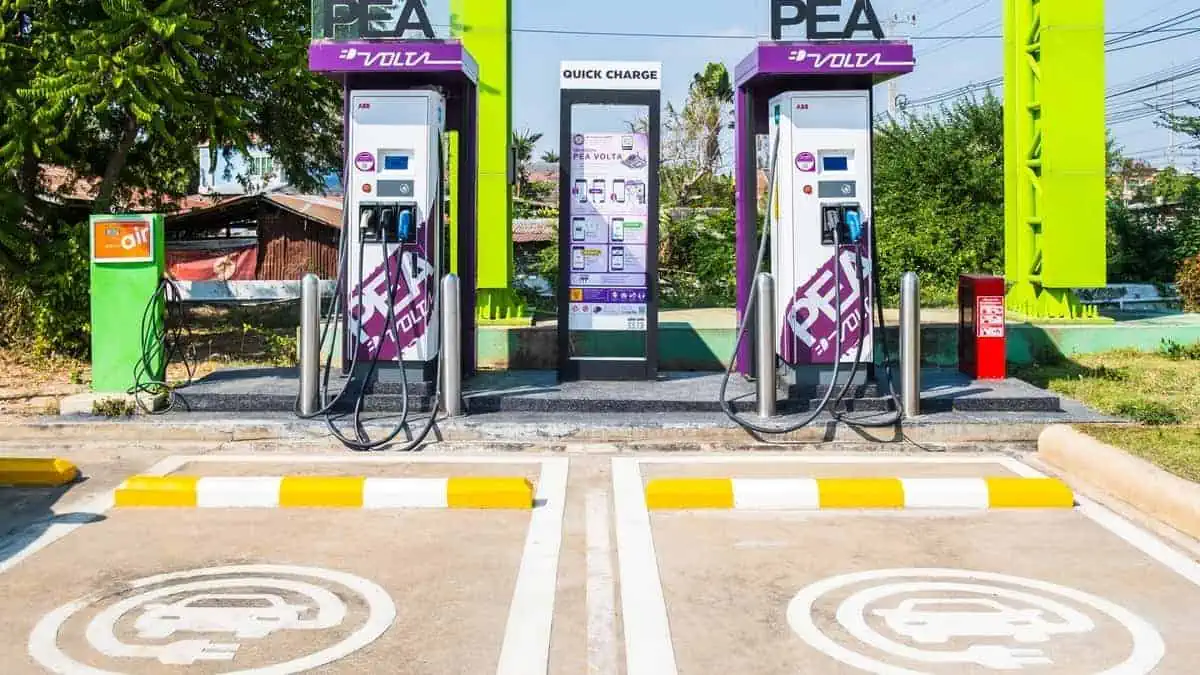The following are the top 20 future trends in electric vehicle charging infrastructure:
| No. | Trend | Benefits |
| 1 | Ultra-fast charging (350 kW+): Stations providing significantly faster charging times than current options. | Reduces charging time significantly, improving convenience and user experience. |
| 2 | Wireless charging: Eliminating the need for physical cables for charging. | Offers convenience, eliminates cable clutter, and reduces wear and tear on connectors. |
| 3 | Vehicle-to-Grid (V2G) integration: EVs feeding excess power back into the grid during peak demand. | Creates a two-way flow of energy, improving grid stability and potentially generating income for EV owners. |
| 4 | Dynamic load balancing: Smart systems distributing charging power across stations based on real-time demand. | Optimizes energy usage, prevents overloading, and ensures availability for all users. |
| 5 | Solar-powered charging: Utilizing solar panels to generate electricity directly for charging stations. | Promotes sustainability and reduces reliance on the grid. |
| 6 | Battery swapping stations: Offering quick battery swaps for compatible EVs instead of charging. | Reduces charging time significantly, ideal for long-distance travel and specific vehicle models. |
| 7 | Autonomous charging: Self-driving EVs docking and charging automatically without human intervention. | Enhances convenience and accessibility, particularly for people with disabilities. |
| 8 | Smart charging apps: Real-time information, booking, and payment options for charging stations. | Simplifies the charging experience and improves user satisfaction. |
| 9 | Integration with public transportation: Charging stations strategically located near bus stops, train stations, and other transportation hubs. | Encourages seamless multi-modal journeys and wider EV adoption. |
| 10 | Subscription-based charging models: Access to a network of charging stations for a monthly fee. | Predictable charging costs and potentially lower overall expenses for frequent users. |
| 11 | Focus on rural and underserved areas: Expanding charging infrastructure beyond urban centers. | Promotes equity in EV access and encourages wider adoption across populations. |
| 12 | Second-life batteries: Utilizing retired EV batteries for stationary energy storage or charging stations. | Extends battery life, promotes sustainability, and reduces battery waste. |
| 13 | Standardization of charging protocols: Universal charging connectors and communication protocols for seamless charging across brands. | Improves user convenience and avoids compatibility issues. |
| 14 | Cybersecurity measures: Robust security systems protecting charging infrastructure and user data. | Crucial for safeguarding against potential cyberattacks and data breaches. |
| 15 | Integration with renewable energy sources: Combining charging stations with wind, solar, or other renewable energy sources. | Maximizes sustainability and reduces reliance on fossil fuels. |
| 16 | Gamification of charging: Reward systems and incentives for using charging stations and adopting sustainable practices. | Encourages user engagement and promotes positive charging behavior. |
| 17 | Personalized charging experiences: User profiles and preferences influencing charging options and recommendations. | Tailors the charging experience to individual needs and preferences. |
| 18 | AR/VR integration: Augmented reality or virtual reality tools for visualizing charging stations and managing charging sessions. | Enhances user experience and provides additional information about stations. |
| 19 | AI-powered optimization: Artificial intelligence optimizing charging efficiency, managing demand, and predicting usage patterns. | Improves grid stability, reduces energy costs, and ensures efficient resource allocation. |
| 20 | Focus on aesthetics and integration into urban landscapes: Designing charging stations that are visually appealing and blend seamlessly into their surroundings. | Promotes public acceptance of EV infrastructure and enhances the urban environment. |






